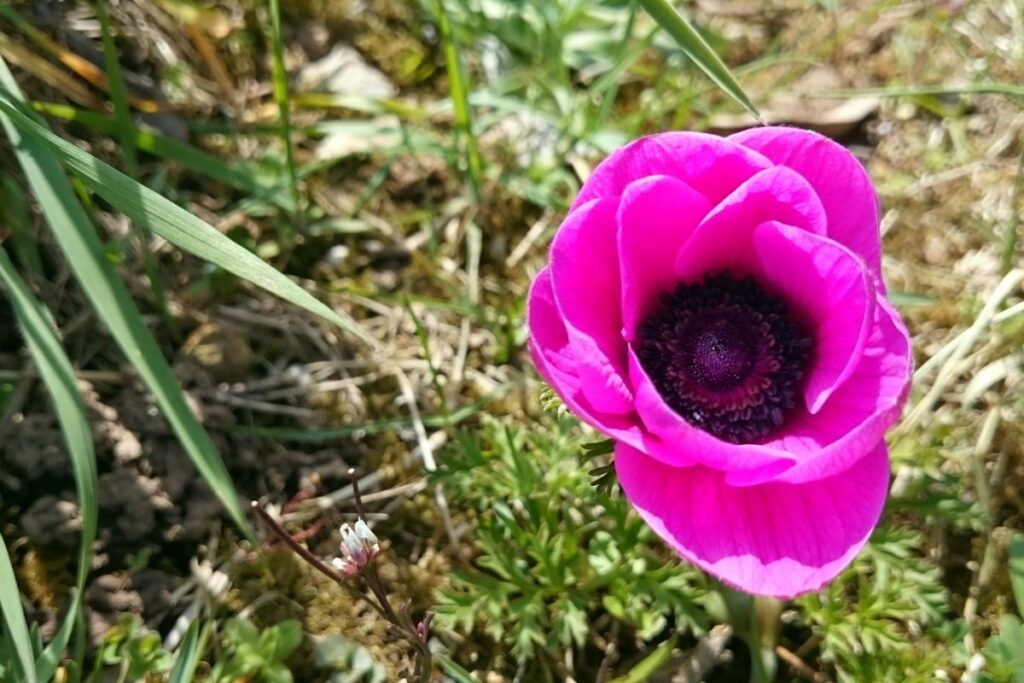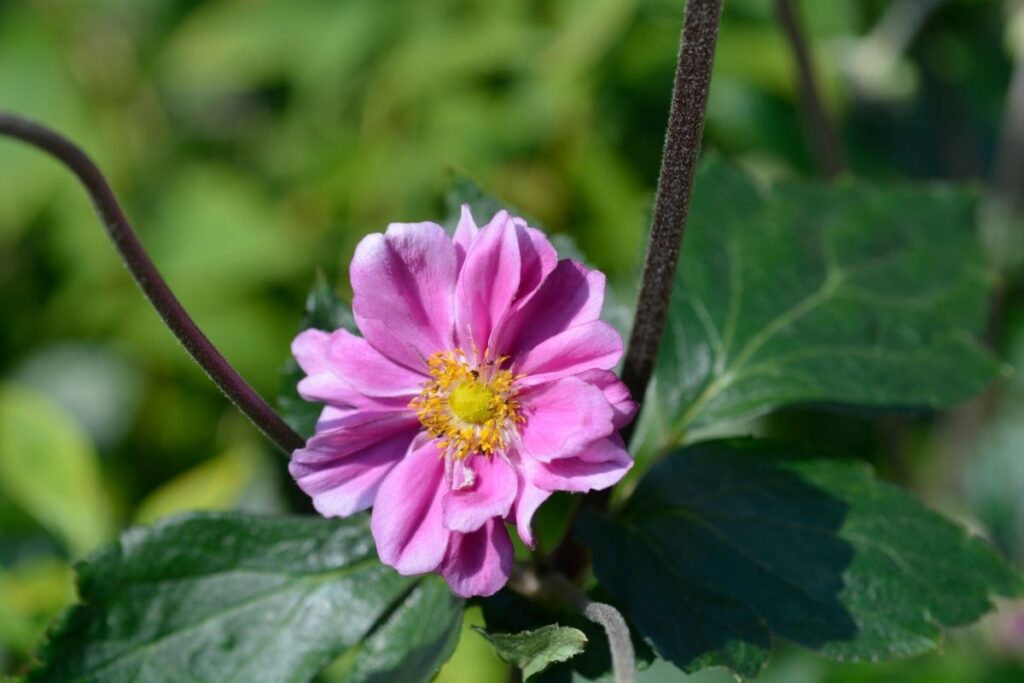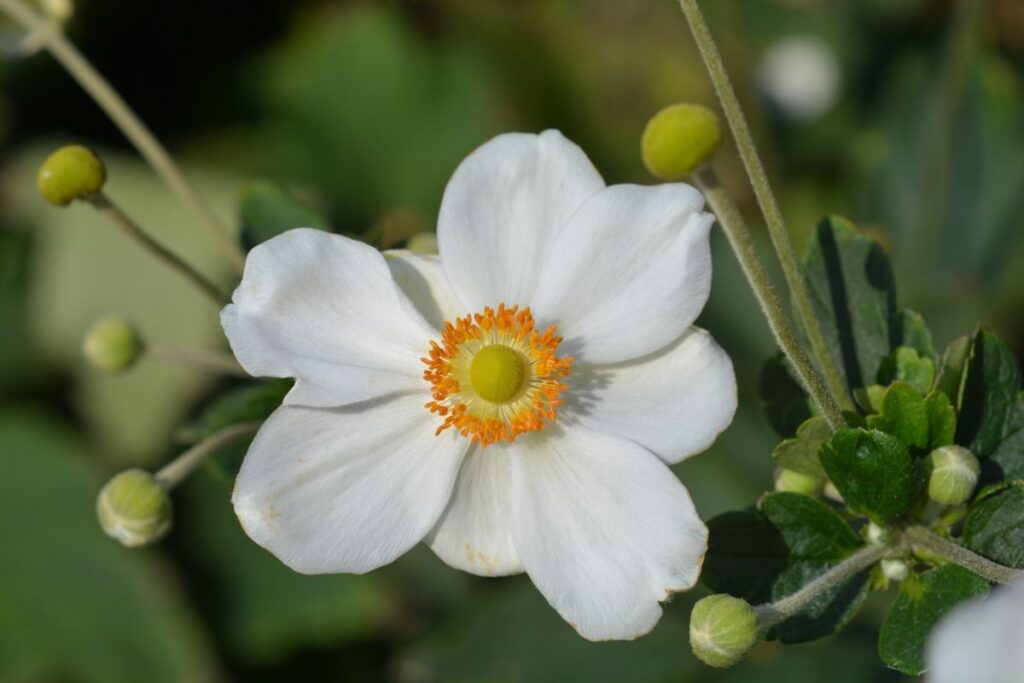When the winter recesses for the first moment of the year and the mornings begin to be filled with bird song, it may only be a few days before flowers come forth in all their majesty. They will work their way through the tough soil and greet the days ahead with all the color and fragrance we missed during the long nights of winter. One of the most prominent groups of these spring flowers is the Anemone family. Many people are more family with their wildflower relative, the buttercup, and while they look similar, the humble buttercup lacks the vibrant intensity of its dramatic cousin. These different types of Anemones flowers are native to every continent, excluding Antarctica and Australia, and can be found in almost every temperate climate on the planet.

They have gained the curious name of windflowers as they are delicate looking, but incredibly sturdy in build and tend to be the only flowers seen during the strong winds of early spring or early autumn, hence the name.
For many horticulturalists, these plants are a great addition to the garden, especially during times when other, more fragile flowers won’t bloom.
But there is a difficulty in deciding which of these plants to place in your garden, and the headache of those decisions can be irritating. As such, we have put together a list in order to help you decide.
The Different Types of Anemone
The reason for the difficulty in choosing one of these plants for your garden comes in the variety.
These plants are abundant in nature and in the world currently there are over 200 different species, which, while certainly not the largest plant family, is definitely still a difficult selection to pick from.
As such, we have created this list of the most popular Anemones and why people are clamoring for them, so you don’t have to.
1. De Caen Anemones
Starting off with a French flower to begin with, the De Caen or French Anemone. While they can come in different colors and shapes, the majority are poppy lookalikes that have bright red flowers and outer petals that form around each other in a cup shape.

The inside of the petal around the center of the bloom is a subdued pink, with nectaries being a vibrant purple.
They are not the most resilient of Anemones and should you live in a colder climate, then it is best to plant them in spring rather than autumn, however in warmer climes you could plant them in spring for a late summer bloom.
But if you give them the perfect conditions, these flowers can bloom in abundance and can grow from 6 and up to 24 inches in height when in full sunlight.
2. De Caen Anemone Hybrid – Mr Fokker
Due to the beauty of the De Caen cultivar and the ease at which it can be interbred with other Anemones, there are quite a few hybrids that look unique compared to their ancestors.

One of these is the Mr Fokker De Caen Anemone Hybrid.
The reason for this plant’s popularity is the extraordinary colors that are on display in this plant.
The nectaries of the bloom remain a wonderful dark purple, but the petals and flower itself are a gorgeous azure color with purple undertones.
The whole petal is one solid color, except when it comes to the petal’s veins, which are a darker azure tone, giving a mesmerizing contrast between the different sections of the plant.
These plants are small, at 6 inches, but when planted profusely in one area, they give the impression of walking through a rare and beautiful mountain meadow.
3. De Caen Anemone Hybrid – Bordeaux
Another hybrid of the De Caen Anemone cultivar, this time from an area of northern France, the Bordeaux variety. Once again, the reason this plant is so popular is its extraordinary colors, but people also love the shape of the bloom itself.

The bloom opens outwards, giving the flower a bowl shape, but each of the petals curls down at the end, which displays the same look as a fleur-de-lis.
This entire shape accentuates the colors significantly, as each petal is a wonderful, deep maroon color until it reaches the outside of the nectary.
The bottom of the petals, ringing the nectary, are a pure white color and the nectary itself is a rich purple.
This is in contrast to the normal spring colors, but it is truly beautiful and reminiscent of Paris on a warm summer’s night.
These plants’ emergence during spring and their height of 12 inches will make your garden spectacular looking while being unique in its style, far removed from the standard colors associated with the season.
4. Japanese Anemones
The Japanese Anemones are much taller, but also much more slender than their French cousins. As before, these plants come in many colors and sizes, but most range from pure white to a watercolor like blend mixed in with the white – like a pinkish-white.

The nectaries of these plants are bright yellow, in contrast to the petals, and at the very center of the yellow is a green and circular mass.
Due to the volatile environment of their native home of China – not Japan, strangely – with its boiling, humid summers and harsh, snowy winters, these plants are extremely adaptable and can be grown in a number of different climates.
While they are tolerant of the sun and different soils, providing partial shade and well-drained soil for them would be for the best.
Be aware that these plants can grow from 2 to 4 feet in height, so you will need to portion out a sizable area of your garden to keep them happy.
5. Japanese Anemone Hybrid – Queen Charlotte
The Queen Charlotte is the perfect plant to have in your garden, when plants begin receding for autumn. This flower blooms in late summer and, if fed and watered properly, can even keep blooming into mid to late autumn when no other flowers are blooming.

The flowers of the Queen Charlotte have wide petals that overlap and open almost the entire way outwards, with only a slight cup at the end.
The petals are a pinkish white blend, where occasionally parts of the petal will be pinker or whiter, and the nectaries are bright yellow and push outwards in much the same way as the petals do.
The green center ties the whole display together, making them wonderful show plants.
These plants can grow up to 3 feet in height and can be planted in either full sun or partial shade.
6. Japanese Anemone Hybrid – Honorine Jobert
Another hybrid of the Japanese Anemone is the Honorine Jobert.

One of the hardiest of the Anemone family, it can grow in freezing conditions, and it may be the Anemone of choice for those who live in the cold, dark north.
However, they do poorly in warmer climes, so bear that in mind before buying them.
The blooms of these plants are much smaller than the Queen Charlotte, only being an inch or two in diameter, but they make up for this in charm.
The petals open up completely, looking almost like a plate, while still maintaining the haphazard overlapping seen before. Each petal is pure white, from tip to base, and they stand effortlessly on a tiny stem.
The nectaries are bright yellow and compacted together into a tight ring around the green center.
The plants can grow up to 4 feet in height and love either partial or full sunlight, though we would suggest full sun. It is not for any other reason than the effect, as these plants will rustle in the breeze and transform your garden into a wonderful summer field.
7. Wood Anemones
Wood Anemones are another European native, and they are probably the shortest of the Anemones, growing at most to 12 inches in height.

While the colors of this group of Anemones tends to stay around the white area – with some yellow blended in – there are some offshoots of this cultivar that are pink or even blue.
The blooms of this plant are small with delicate, oval petals, with yellow nectaries that tentatively reach out from the center of the plant towards the end of the petals and a green center, much like their Japanese Anemone cousins.
The fascinating thing about Wood Anemones is their leaves, which have long, thin lobes running all along them. The leaves are also a beautiful dark green and become about the same size as the bloom of flowers, which provides a stark contrast to one another.
The one thing that is completely different about Wood Anemones to other Anemones is that they need to be grown in partial shade only. They do not tolerate direct sunlight well.
8. Wood Anemone Hybrid – Pallida
The Pallida is a wood Anemone Hybrid that is perfect for temperate or colder climes, due to its European heritage. They are not good for warmer climates and will need extra care if you plan to plant them in such a place.

The flowers are a lovely, light yellow, and they form five little, flat petals that fan out in a star-like shape. This is a nice blend with the bright yellow nectaries that surround the green center.
These plants usually bloom from early spring to the middle of summer, at which point they will go dormant until the next year.
These plants only reach up to 6 inches in height and will need some sort of shaded cover to grow them, but they are a great and easy plant to have in your garden.
Conclusion
Anemones are a wonderful addition to your garden, and they are perfect for getting you through the summer with at least some blooms lasting until autumn.
They are good in cold climates, and their ability to withstand most strong winds is perfect for particularly windswept nations.
If you are looking for a wildflower that can be grown in abundance, that are easy to maintain, and that comes in such a variety that no matter where you plant them they will look good, then the Anemone family is the group of plants for you.
There are more than is listed here, so go have a look if you can’t see one you like.







